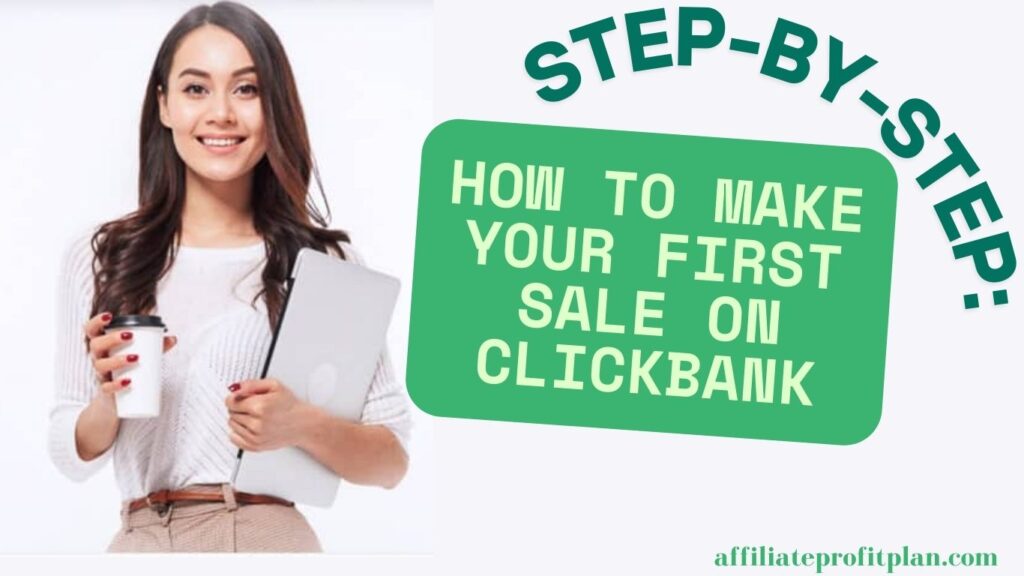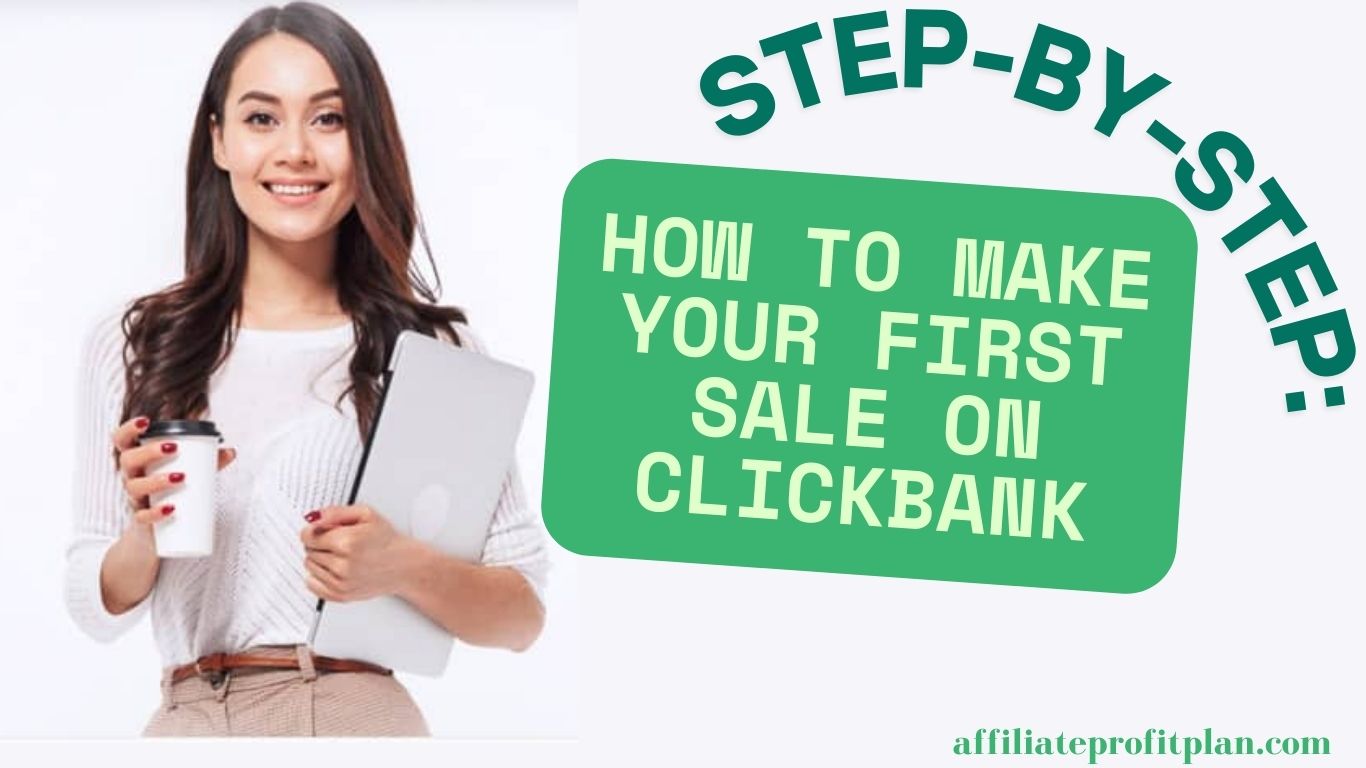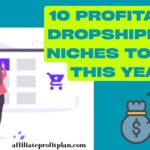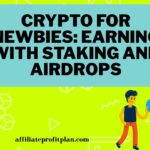Welcome to my article Step-by-Step: How to Make Your First Sale on ClickBank. ClickBank—the magical land of digital products, sky-high commissions, and the promise of waking up to passive income while still in your pajamas. If you’ve landed here, chances are you’re curious (or desperate?) to make that sweet, sweet first affiliate sale. And let me tell you—there’s nothing quite like it. That first notification hits different. Suddenly, the internet isn’t just cat videos and memes—it’s your new boss.
In this guide, we’ll walk you through a no-nonsense, step-by-step plan to get you from zero to your first commission—without losing your mind or your Wi-Fi signal. Whether you’re tech-savvy or still figuring out how to exit full-screen mode, we’ve got you covered. So grab your coffee (or energy drink of choice), and let’s dive into the ClickBank trenches together. It’s time to turn your scroll into a sale.
Access My Proven Blueprint for $50-$100 Daily Income – Watch This FREE Video Now >>>

Step 1: Sign Up and Understand the ClickBank Dashboard
Alright, before you become an affiliate marketing wizard and start raking in commissions, you need to do the one thing every great digital hustler does first: sign up.
The good news? Signing up for ClickBank is easier than microwaving instant noodles. Head over to ClickBank . com, hit that juicy “Start Here” or “Sign Up” button, and fill out your basic info—name, country, email, password. Yes, you’ll also have to create a nickname. Pro tip: choose wisely, because that nickname becomes part of your affiliate link (nobody wants to promote a product with “unicornlover88” in the URL).
Once you’re in, you’ll be greeted by the ClickBank dashboard—which, at first glance, might look like a cockpit. Don’t worry, you won’t need a pilot’s license to figure this thing out. Let’s break it down:
- Marketplace – This is where the magic happens. It’s the giant digital shopping mall filled with affiliate products you can promote. You’ll live here.
- Reporting – This is your earnings hub. If you see a bunch of zeroes at first, don’t panic—that’s just your humble beginning.
- Tracking IDs – Super handy if you want to track which platform (YouTube, TikTok, your dog’s blog) is driving sales.
- Settings/Account Info – This is where you’ll enter your payment method, because yes, eventually those commissions need a place to land (Payoneer, direct deposit, even paper checks if you’re feeling vintage).
Before moving on, spend a few minutes clicking around. Familiarize yourself with the layout, read a few FAQs, and maybe pat yourself on the back. You’re now officially in the affiliate game. Welcome aboard, captain.
Step 2: Pick a Profitable Product to Promote
Now that you’ve got your shiny new ClickBank account and you’ve poked around the dashboard without accidentally launching a rocket—congrats! It’s time for one of the most crucial steps: picking a product that’s actually worth promoting.
Think of the ClickBank Marketplace like a giant digital buffet. There are thousands of products just sitting there, waiting to be served to the right audience. From keto cookbooks and manifestation guides to dog training videos and woodworking plans (yes, really), there’s something for everyone—and their oddly specific problems.
But before you dive in and choose a product based solely on how cool the sales page looks (we’ve all done it), here are a few things to keep in mind:
🧠 Know Thy Niche
Start with what you know—or what you’re at least mildly interested in. Promoting a dog training course is way easier if you’ve actually owned a dog and not, say, a goldfish named Barky. Whether it’s fitness, dating advice, personal finance, or even beekeeping—niches work best when you have some familiarity.
📊 Understand the Gravity Score
No, it’s not about space. On ClickBank, “Gravity” is a score that shows how many affiliates have made sales with that product recently. Generally, a gravity between 20–70 is a sweet spot: it’s selling, but not oversaturated. Anything above 100 means it’s hotter than your laptop fan during a Zoom call.
💰 Check Commission Rate and Upsells
Some products pay 75%+ in commissions and have upsells (bonus offers after the initial sale), meaning you can earn more without doing more. We like that.
🛠️ Look for Affiliate Tools
Many vendors offer affiliate toolkits—banners, email swipes, ad copy, etc. These are gold for beginners. If the product page looks sketchy or dated (hello, 2007 fonts), move on.
📍 Tip: Test Click the Sales Page
Would you buy it? If the answer is no, don’t expect your audience to either.
So take your time, browse the buffet, and pick something that looks promising. You’re not just choosing a product—you’re choosing your first shot at making that sweet commission. Choose wisely, young affiliate. Your fortune cookie depends on it.
Step 3: Build a Simple Funnel or Use a Direct Link
Alright, you’ve picked a product that doesn’t scream “scam,” and you’re feeling good. Now the million-dollar question (okay, maybe first-sale question): how do you actually promote it?
Access My Proven Blueprint for $50-$100 Daily Income – Watch This FREE Video Now >>>
ClickBank gives you a HopLink—a fancy term for your unique affiliate URL that tracks clicks and commissions. You can do two things with it:
🥾 Option 1: Go Full Cowboy with Direct Linking
This is the no-fuss, quick-draw method. Copy your HopLink and share it everywhere—on social media, in YouTube descriptions, in forums (where allowed), or even to your group chat if you’re bold.
Pros:
- Super easy, zero setup.
- Perfect if you’re promoting through places like TikTok or YouTube Shorts.
Cons:
- Harder to build trust (would you click a weird link from a stranger?).
- No email list = no follow-up = no second chances to sell.
This method can work, but it’s kind of like fishing with a paperclip and hope. It’s possible—but why make it harder?
🧠 Option 2: Build a Simple Funnel (AKA “The Smart Way”)
This is where the pros hang out. A funnel is just a fancy word for a process that guides your audience from “meh” to “take my money.” The simplest version looks like this:
Landing Page → Thank You Page / Affiliate Offer
You can use free tools like:
- Systeme . io (great all-in-one platform)
- Carrd . co (super simple landing pages)
- Google Forms + a redirect (yep, you can hack it!)
Why bother? Because with a funnel, you can collect emails, build trust, and follow up later with more offers or helpful content. That’s how real affiliate marketers make consistent money—not just one-off sales.
Bonus Tip: Use a link tracker like Bitly or ClickBank’s tracking ID feature to test what links and platforms are working best. It’s like affiliate science, minus the lab coat.
In summary: if you’re just testing the waters, direct linking works. But if you’re serious about building long-term income (and an audience that trusts you), get that funnel flowing, friend.
Step 4: Drive Traffic to Your Offer (Free or Paid)
You’ve picked a product. You’ve built your funnel (or bravely went the direct-link route). Now comes the part that separates the dabblers from the digital dynamos: getting people to actually see your offer. Because no matter how amazing your affiliate link is, if no one clicks it… well, your commissions will be as empty as your inbox on a Friday night.
Luckily, there are two main ways to bring in traffic: the free kind (which costs you time) and the paid kind (which costs you money).
💸 Paid Traffic: The Fast Lane
If you’ve got a budget and a bit of guts, paid ads can bring instant eyeballs to your offer. Think:
- Facebook & Instagram Ads – Great for lifestyle niches. You can target people by interest (like “people who love keto AND have a dog AND are named Steve”).
- Google Ads – Great if people are already searching for your product.
- YouTube Ads – Ideal for video-heavy products or if you enjoy watching your face in 1080p.
Paid ads = faster results, but more risk. You’ll need to test, tweak, and possibly cry into your coffee during the learning curve.
🆓 Free Traffic: The Slow Burn
For the budget-conscious (or just plain broke), there’s always free traffic. It’s slower, but incredibly powerful long-term:
- YouTube or TikTok – Create content related to your niche and drop your link in the description.
- SEO Blog Posts – Write keyword-rich articles that show up in Google search.
- Pinterest – Yes, it still works. Especially for DIY, wellness, or “mom blog” products.
- Facebook Groups, Reddit, Quora – Engage genuinely, don’t spam, and share your link only where allowed.
The key? Pick one method, master it, and stay consistent. Traffic is the fuel of affiliate marketing—and no fuel = no commissions, no dream laptop lifestyle, and no bragging rights.
Step 5: Track, Tweak, Repeat (How to Optimize for Results?)
So, you’ve launched your affiliate campaign. You’ve got your offer, your funnel (or direct link), and you’re driving traffic like a content-fueled maniac. But now comes the part that turns a lucky guess into a real business: tracking what works, tweaking what doesn’t, and repeating what prints money.
Affiliate marketing isn’t a “set it and forget it” toaster oven—it’s more like a sourdough starter. You’ve gotta feed it, watch it, and occasionally panic when it bubbles weird.
📊 Step 1: Track Your Links
ClickBank lets you add tracking IDs to every HopLink you create. This means you can tag each link with a label like yt_vid1, email_march, or pls_work_this_time and see exactly which traffic sources are bringing in the dough.
You can also use tools like:
- Bitly – For clean, shortened links with click data
- ClickMagick – For the serious data nerds (with split testing!)
🔧 Step 2: Tweak Ruthlessly
If no one’s clicking? Your ad or content might need a stronger hook.
If they’re clicking but not buying? Your landing page or sales copy could use a makeover (and maybe a less creepy stock photo).
Change one thing at a time—your headline, your CTA, your color scheme—so you know what’s actually making the difference.
🔁 Step 3: Repeat What’s Working
Found something that’s converting? First, happy dance. Then double down. Scale it, clone it, repurpose it. Success loves consistency, and your bank account will love you back.
In short: Don’t just launch and ghost your campaign like a bad Tinder date. Track. Tweak. Repeat. That’s how affiliate marketing turns from a side hustle into a system that pays while you sleep (or doomscroll at 2 AM).
Conclusion: Your First ClickBank Sale Is Closer Than You Think
And there you have it—your official crash course in making your first ClickBank sale without sacrificing your sanity, savings, or social life.
Access My Proven Blueprint for $50-$100 Daily Income – Watch This FREE Video Now >>>
Let’s do a quick recap (because checklists make us feel productive):
✅ Signed up for ClickBank
✅ Found a product that doesn’t look like a snake oil special
✅ Built a funnel (or at least didn’t send people straight into the void)
✅ Sent traffic to your offer like a mini digital marketing boss
✅ Tracked what’s working and actually learned something from the numbers (look at you!)
Now, is ClickBank a get-rich-quick scheme? Nope. (Spoiler: most things that involve real money and real people aren’t.) But it is one of the simplest ways to dip your toes into the world of affiliate marketing—especially if you’re a beginner without a product, warehouse, or customer support hotline.
Remember, the first sale is the hardest—not because it’s impossible, but because you’re learning everything as you go. But once you’ve got that sweet little notification that says “Commission Earned,” you’ll be hooked faster than someone clicking a “free eBook” lead magnet.
So go on, start small, experiment, and most importantly—keep at it. Because if Susan from YouTube can earn $3K a month promoting weight loss smoothies… so can you. Probably better.
Your ClickBank empire awaits, my friend. Go get that sale—and maybe, just maybe, that beachside laptop lifestyle you keep seeing on Instagram.
Thanks a lot for reading my article on “ Step-by-Step: How to Make Your First Sale on ClickBank” till the end. Hope you’ve helped. See you with another article.










